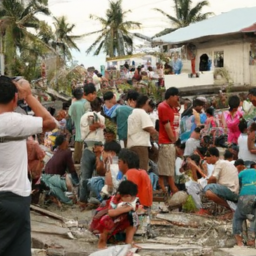A powerful earthquake struck the Philippines on September 30, 2025, registering a magnitude of 6.7. The epicenter was located near Leyte Island, a region that has historically experienced seismic activity due to its position along the Pacific Ring of Fire. Fortunately, no tsunami warning was issued following the quake, alleviating immediate fears of a secondary disaster. In my experience covering seismic events, the Philippines is particularly vulnerable to earthquakes due to its geological makeup. The archipelago sits atop several tectonic plates, making it one of the most seismically active regions in the world. According to official reports from the Philippine Institute of Volcanology and Seismology (PHIVOLCS), the earthquake occurred at a depth of approximately 10 kilometers, which is relatively shallow and can amplify the shaking felt on the surface. The immediate impact of the earthquake was felt across various regions, with reports of tremors reaching as far as Cebu and Mindanao. Residents described the experience as intense, with buildings swaying and items falling from shelves. First-hand insights from local residents indicate that many people evacuated their homes in fear, although there were no immediate reports of casualties or significant structural damage. However, the potential for aftershocks remains a concern, as historical data shows that significant earthquakes often precede or are followed by smaller tremors. Experts agree that while the absence of a tsunami warning is reassuring, it is crucial for residents to remain vigilant. Research confirms that earthquakes of this magnitude can lead to secondary hazards, including landslides, especially in mountainous areas. The Philippine government has protocols in place for emergency response, and local authorities are currently assessing the situation to ensure public safety. In terms of preparedness, the Philippines has made strides in earthquake readiness over the years. Following the devastating effects of past earthquakes, including the 1990 Luzon earthquake, which resulted in thousands of casualties, the government has implemented stricter building codes and public education campaigns. These measures are designed to minimize damage and loss of life in the event of future seismic events. According to government data, the publics awareness of earthquake preparedness has improved significantly, with more individuals participating in drills and learning about emergency protocols. Despite these advancements, challenges remain. The countrys infrastructure, particularly in rural areas, can be vulnerable to seismic activity. Observations indicate that older buildings may not meet modern safety standards, raising concerns about their ability to withstand significant earthquakes. Furthermore, the economic impact of such natural disasters can be substantial, affecting local businesses and livelihoods. Studies show that the recovery process can take years, particularly in regions that rely heavily on agriculture and tourism. As the situation develops, the Philippine government is urging residents to stay informed through official channels. Emergency services are on high alert, and local governments are mobilizing resources to assist those affected. It is essential for communities to remain connected and share information, especially in areas where communication infrastructure may be compromised. Looking ahead, experts predict that the frequency of seismic events in the region is likely to continue, given the geological conditions. Technical analysis suggests that ongoing monitoring of tectonic activity is crucial for early warning systems. The integration of technology in disaster preparedness, such as mobile alerts and real-time data sharing, can enhance community resilience. In conclusion, while the 6.7 magnitude earthquake that rattled the Philippines on September 30, 2025, did not result in a tsunami warning or immediate catastrophic damage, it serves as a reminder of the countrys vulnerability to natural disasters. The lessons learned from past events and ongoing efforts in disaster preparedness are vital for mitigating risks and ensuring public safety. As observed, the resilience of the Filipino people in the face of such challenges is commendable, but continued vigilance and investment in infrastructure and education are necessary to safeguard against future seismic threats.
TRENDING NOW
WORLD
Global Messaging Trends: Can Local Apps Like Arattai Overtake Giants?
44% 🔥
POLITICS
Accusations fly over whether Republicans or Democrats 'own' shutdown
35% 🔥
POLITICS
Rep. Mike Haridopolos, R-Fla., talks about the government shutdown
34% 🔥
POLITICS
What happens now that the government has shut down. And, a pricing deal with Pfi...
26% 🔥
POLITICS
Married, but no connection: Reality of silent divorces in Indian homes
31% 🔥
POLITICS
Netanyahu's apology to Qatar, phone on Trump's lap: A telling White House photo
38% 🔥
MOST READ
SPORTS
Week 5 NFL odds, lines, betting picks, spreads: 2025 predictions: Model backs Sa...
55% 🔥
SPORTS
Predicting every undefeated college football team's first loss: Will anyone beat...
36% 🔥
SPORTS
Tigers Lefty Tarik Skubal Deserves Second Straight AL Cy Young Award
54% 🔥
SPORTS
Jets Get Official Braelon Allen Injury Diagnosis
61% 🔥
SPORTS
Gill: India won't be 'looking for any easy options' against West Indies
49% 🔥
SPORTS
Phil Mickelson takes a jibe at golf during friendly banter with ex-LIV Golf CEO’...
39% 🔥

